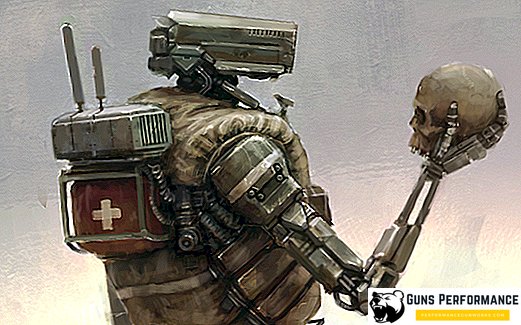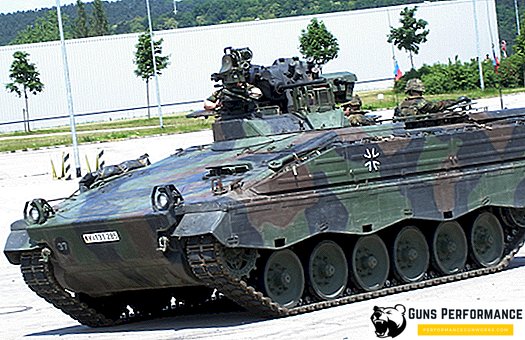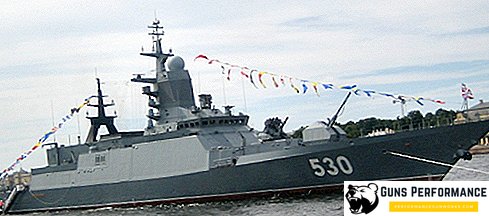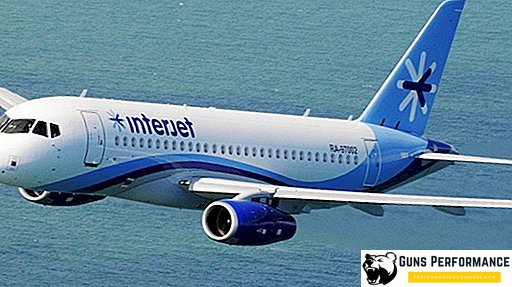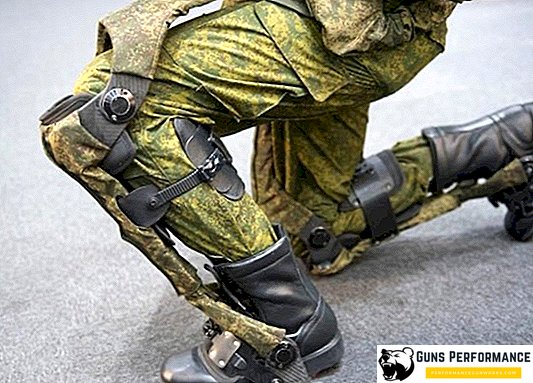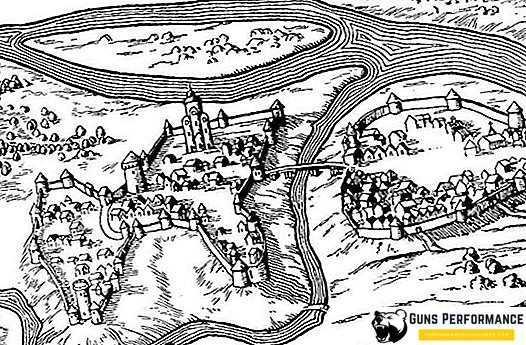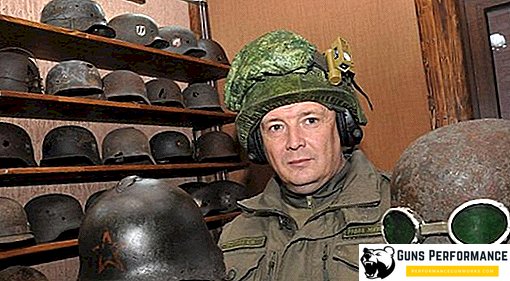
Army protective helmets (ZS) - a reminder of the era of knights. They have remained virtually unchanged part of the combat armor. If the cuirass was transformed into a bullet-proof vest, which does not at all resemble the military armor of a knight, then iron helmets were produced until recently.
Although there was a time in military history when soldiers wore headgear instead of protective helmets, in the end, necessity forced the military authorities to return this part of the armor back into service.
The appearance of combat helmets in France

Up until the beginning of the First World War, soldiers of European states did without protective helmets. The army refused to armor for a long time already, therefore the helmet protecting a head, was considered as an element of an ancient armor to which there is no place in modern army. However, the First World War, which received the unofficial name "trench", showed that the rejection of the soldier’s helmets was a rash decision.
Since it was necessary to pop out of the trenches, the soldiers' heads were the first to feel how bad they were without reliable protection. Most of the soldiers' deaths occurred precisely from headshots. Seeing the monstrous losses of personnel occurring in the war every day, the generals of European countries seriously worried.
The first special purpose helmets were developed in France. Prior to their appearance, French soldiers wore cloth caps that could only protect the head from bad weather. The first French helmet was named "Adriana" and began to be mass-produced as early as 1915. It was non-cast and consisted of the following parts:
- Cap;
- The crest;
- Skirts.
Immediately after the appearance of helmets, the losses of the French army were significantly reduced. For example, the total number of injured decreased by 30%, and those killed - by 12-13%. It should take into account the important fact that the French helmet was not designed to protect against bullets. Of course, he could ricochet a bullet that fell into it along a lateral trajectory, but could not withstand a direct hit. But shrapnel and fragments from grenades did not break through it.
Seeing the unexpected success of the "reanimation" of such a seemingly outdated protection element like a helmet, the Allied countries rushed to purchase a huge amount of "Adrian" for their armies. The following countries have purchased such protection:
- Russia;
- Romania;
- Italy;
- Portugal;
- Great Britain.
All of the above countries, except England, were very pleased with the protective properties of French helmets.
English soldier helmets

The military leadership of Great Britain, which bought a large batch of French helmets, remained very unhappy with their protective qualities. A commission was created to develop its helmet, which would be better than the French equivalent. It is possible that this decision was made because of the pride of the British military aristocracy, who considered it shameful to use helmets in the war, which came up with "frogs".
After reviewing several options, the British military command chose the design of John Brodie, who presented his own helmet model, very much reminiscent of the medieval English iron hat Capellin. In such helmets, the Angian soldiers fought in the 11th – 16th centuries. After minor modifications, the helmet was adopted by the British Army under the name "Helmet Steel Mk1".
Unlike the French model, the English helmet was solid and had wide edges around the perimeter. It was well suited for protection in the trenches, as wide fields protected shrapnel and debris from above. But each attack in it was very risky, because the helmet did not completely protect the back of the head, temples and ears. Since the British troops didn’t go on the attack too often, this helmet was not only liked by the English military, but was also adopted by several very friendly UK countries. These were:
- USA;
- Canada;
- Australia.
It is clear that these 3 countries, due to the fact that they practically did not participate in hostilities, had helmets only for "order".
Military helmets in Germany

When the opponents of Germany for more than a year used protection for the head, the German soldiers still did without it. Only in 1916 did the first German helmets appear, which were quite different from what representatives of the Entente bloc wore. Most likely, the Germans simply did not like the design of the French and English helmets so that they could not withstand a frontal hit by a bullet.
At the beginning of 1916, Germany developed its helmet under the name M-16 "Stahihelm", which was significantly different from the protection of the enemy. Specific "horns" located on the sides, made the appearance of a new military helmet easily recognizable. They not only covered the ventilation holes, but also served as an element for fastening an armored shield that covered the frontal part. Similar armor made breaking through a helmet with a rifle or machine-gun bullet almost impossible.
However, as it turned out, it was better to avoid direct hit on the forehead. The helmet perfectly withstood even a machine-gun bullet, but the soldiers' necks were absolutely not ready for such strength tests. Cervical vertebrae were injured or even broken, which in some cases was fatal.
Among the soldiers, there was an interesting technique, which allowed to keep the neck intact when a bullet hit the head. To do this, the strap on the helmet did not fasten, and it just flew off the head of the soldier. As a result of this trick, many managed to survive after getting a bullet in the head.
Further attempts to create a more durable helmet were also unsuccessful, because an increase in the thickness of the armor gave the helmet extra weight, and the neck still broke.
What helmets were in the USSR after the revolution

If you look at the chronicles or old photographs of the first years after the appearance of Soviet Russia, you can see that the main headgear of the Red Army was a cap-budyonovka. A small number of metal helmets was preserved in military depots, inherited by the Soviet Republic "in inheritance" from the royal power, but more often they flashed on various military parades and parades.
The first Soviet iron helmet was created in 1929. Outwardly, he looked like the famous M-17 "Sohlberg", which was produced in Tsarist Russia. An experimental batch of experimental helmets, called M-29, was released. Due to the fact that the production process was very time consuming and expensive, this model did not become mass-produced.
The political situation in Europe in the 30s of the 20th century showed the USSR that soldiers needed a massive metal helmet. Thus arose the first mass Soviet helmet SS-36. The soldiers in them went through many military conflicts:
- Polish campaign;
- Khalkhin Gol;
- Finnish war;
- Spanish Civil War;
- Battle of Lake Hassan.
This helmet was created on the basis of the German helmet M-16 "Stahihelm", but significantly inferior to him in tactical and technical characteristics. The helmet turned out too heavy, its weight reached 1.3 kg. However, the thickness of the metal helmets, equal to 1.1 mm, was insufficient to protect against bullets and large fragments. The shape of the helmet, which had wide fields, interfered with the review, and sometimes the wind could simply blow off such a helmet from the head of a fighter.
Soon it was replaced by a new model, which was named the US-39 (US-40 since 1940). This helmet is a real legend, since it was in them that the soldiers of the USSR were able to defeat fascism. The new army helmet had the following advantages:
- It was made of alloyed armor steel;
- The wall thickness was 1.9 mm;
- At the same time, the weight was even slightly lower than that of the SS-36 and was 1.25 kg;
- The helmet could withstand a frontal shot at a distance of 10 meters from the revolver.
In 1940, the US-39 was upgraded. There was a replacement podtuleynoy system, after which the helmet was renamed the SS-40. It is under this name that she is known throughout the world. Even at present, these protection options have not been removed from service and are stored in large quantities in Russian military warehouses.
In the future, helmet SSh-40 several times modernized. These modifications took place in 1954 and 1960. In both cases, the upgrade consisted in replacing the podtuleyny device with a more advanced one, but in fact, all these modifications were a bit of a modified model of the US-39.
Serious modernization of the Soviet helmet in 1968

Serious modernization of the school-39 (40) occurred only in 1968. The new helmet was indeed thoroughly reworked, and did not become another upgrade of the US-39. The differences of the new model were in the following nuances:
- The metal was replaced with a stronger armor alloy;
- The inclination of the frontal wall was increased;
- Bumpers shortened.
Currently, SSh-68 is the main Russian protective helmet. In addition, the protection of the same design is used by the armies of the CIS, China, India, Vietnam, North Korea and a number of other countries.
Although the SS-68 does not quite match the level of modern military helmets, their huge number in warehouses makes them do upgrades based on it. So the following, more modern models appeared:
- SS-68M;
- US-68N.
These upgrades received a reinforcement of the design from the inside by aramid and modern subtouch devices. As a result, the weight of new upgrades has increased to 2 kg, but their strength has increased significantly.
Modern models of Russian military helmets

Since at the present time the SS-68 helmets are much more than the Russian army requires, their production has ceased. Now the Russian military industry is mastering the production of new models of helmets, which are made of new and modern materials on fabric-polymer base. New models of helmets are much easier and more convenient than their steel counterparts, and most importantly - their protective properties are superior to those of steel helmets.
The first helmet, which was produced in Russia using modern materials, is called 6B7. He entered service with the Russian army in 2000. Russian special forces, airborne units, marines and other similar units received similar protection.
In 2006, using the 6B7 helmet as a base, the Stal research institute launches a new helmet for the Russian special forces - 6B27, which surpasses most foreign analogues in its protective characteristics.
At present, the designers of the Stal Research Institute are engaged in refining the unique Ratnik-BSh helmet, which has no world analogues.
New Russian helmet 6B47 "Warrior"

Although the newest Russian equipment “Warrior” is still being tested, one of its elements is already being mass-produced - this is a protective helmet 6B47 “Warrior”. It differs from previous Russian developments in its weight, which is less than 1 kg and small dimensions. However, this helmet is much stronger than its heavier "brothers". Similar characteristics were achieved by using the latest composites for its production.
This helmet has a three-layer protection system. The outer and inner layers are made of solid composites, between which a layer of aramid material is placed. This helmet in its functionality is more like a modern pilot helmet. It is equipped with a communication system and a monitor on which an image from an optical sight is projected.
Flying helmets

Modern pilot helmet is not just a device that protects the pilot's head. Most of them are complex devices that are literally stuffed with electronics. The development of flight helmets was very rapid. The first leather hats with built-in heavy aviator glasses quickly gave way to modern devices.
The most interesting of modern flight helmets is the so-called "big-eyed helmet", specially designed for pilots of the American F-35 fighter. The cost of this model is about 600,000 dollars.
Military helmets, which were undeservedly forgotten, returned to the world military arena after the start of the First World War. Currently, the latest military helmets are not just a head protection for a fighter - this is a real computer equipped with modern electronics.


